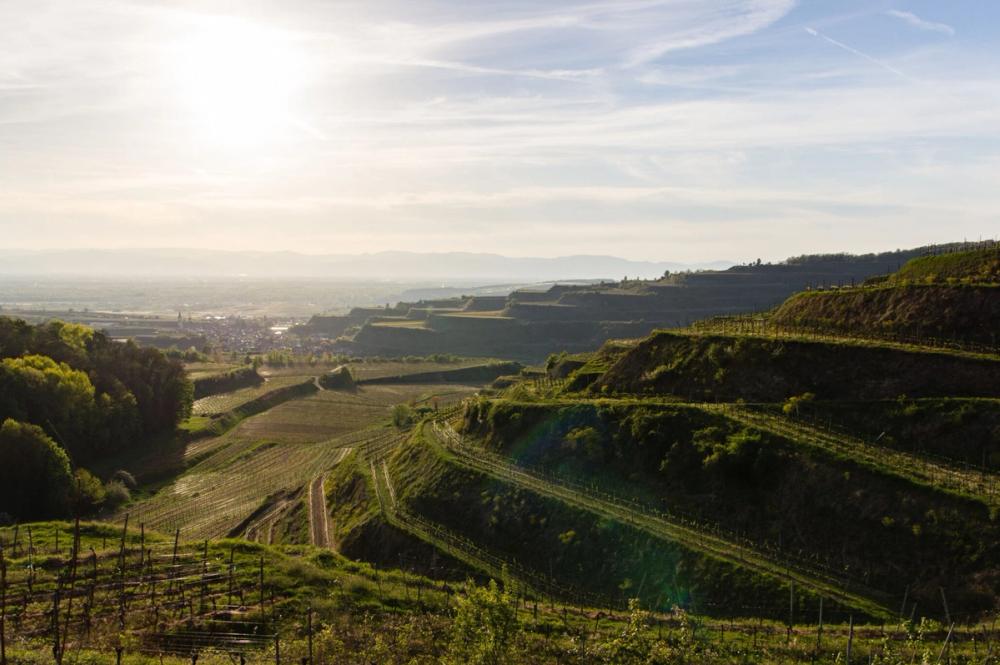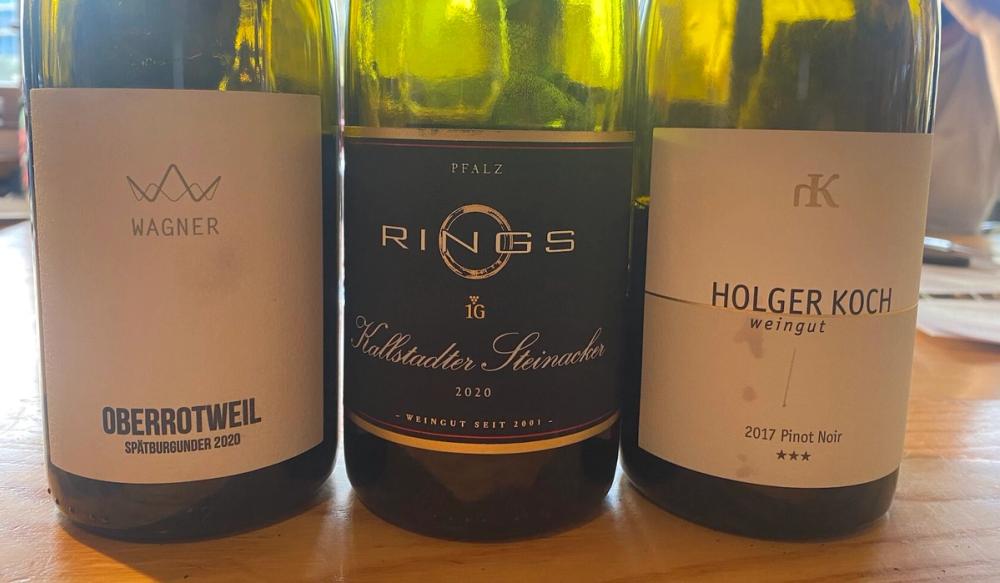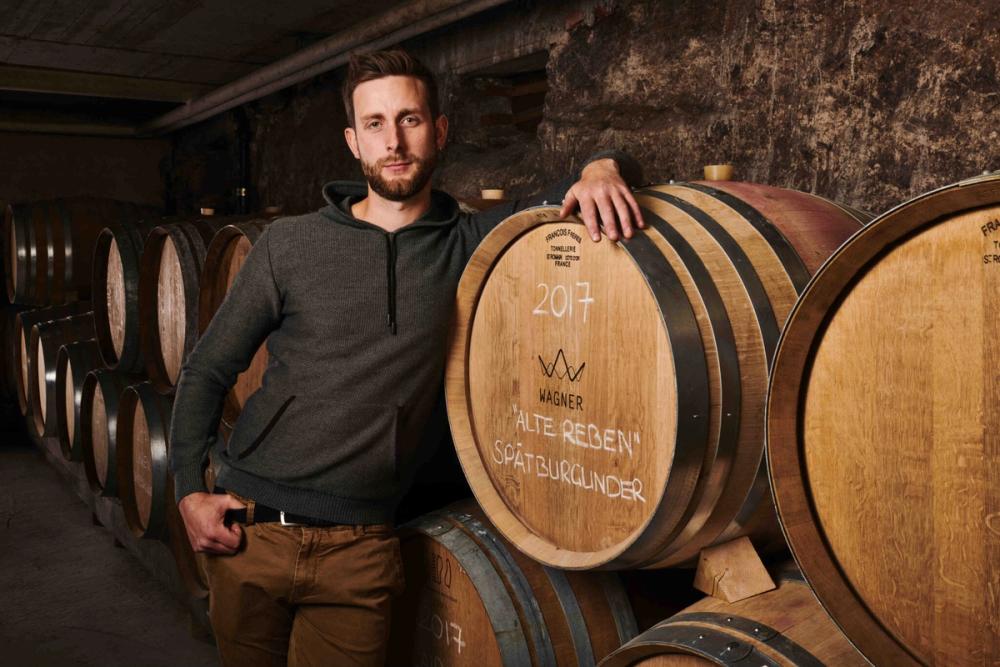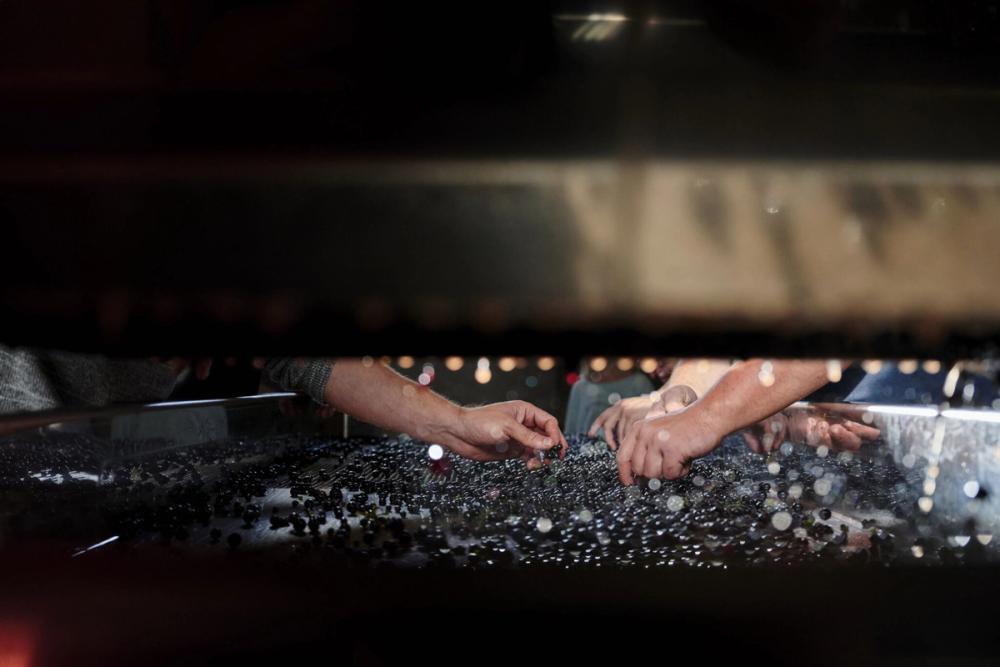“This is a quite brilliant, natural, expression of Pinot Noir – one for the cool kids in east London,” writes Crowther about Peter Wagner’s 2020 Spätburgunder.

Baden is one of the two German regions best suited to ripen Spätburgunder
“2021 was a nice pause for Burgundy, between what has been two hot vintages,” were Sebastian Thomas’ opening comments at a recent eye-opening wine tasting courtesy of Howard Ripley Wines.
‘Understanding German Pinot Noir’ was the order of the day at Clapham’s Trinity restaurant, as Thomas and his team took a group of buyers and sommeliers through some of the best Spätburgunder that Germany has to offer. The bandwidth for ripening cool-climate grapes widens by the harvest these days. I suppose there is a natural reluctance to plant quality Pinot much further north than Burgundy (for still wine, anyway), and Thomas feels that it has fallen to Germany to fill the vacuum not only in terms of cool-climate Pinot, but the ever-increasing price gap. There is now an excellent opportunity to fill the void and it comes from Germany, at least in an old-world sense.

Three of the 12 Spätburgunder that caught Crowther’s eye
Whistle stop: Baden and Pfalz (southwest) are naturally two of the best regions to grow and ripen Pinot in Germany. Baden, simply because it is the most southerly, therefore the warmest of the wine growing German regions. Pfalz is also uniquely placed; as a natural extension of Alsace, the Haardt Mountain range provides sufficient rain cover, couple that with solid diurnals and you have what is a relatively warm climate, given the region’s geographical location.
We tasted 12 wines at Trinity, and my overall initial impressions were overwhelmingly positive. I don’t think I’d be showing myself up by saying this was the first time I had ever tasted so much German Pinot Noir in one go, and I was impressed by the range and versatility on show. Here’s why…

Avoiding So2: Peter Wagner
The natty vibes
Enter Weingut Peter Wagner. “He still needs to master his [lack of] use of sulphur” observed Thomas. It was as though he was almost defending the wines before we had gotten stuck into them. Since this was the first time I had tasted with Howard Ripley’s owner and wine buyer, I should have known that he is just a brilliant taster, and he’s across the slightest of winemaking decisions from producers. Anyway, to Wagner; the Baden producer will be certified biodynamic from next year’s vintage. This guy is a lo-fi, minimal-intervention winemaker who, you guessed it, avoids S02 additions whenever he can.
Weingut Peter Wagner, Spätburgunder, 2020, Baden (£17.95, 12.5%)
60% whole bunch and aged in old oak from volcanic soils. Stick a blindfold around my head and I’d call this a funky Beaujo all day long. This is delicious. Expect a beautifully wild, funky nose up top, complete with ripe red and black fruit, game and a subtle herbal undertow. This is a quite brilliant, natural, expression of Pinot Noir – one for the cool kids in east London.

Holger Koch: working with German Pinot clones in Baden
Subtle, silky complexity
Moving away from the vibrant, gamey, wild side of Pinot, we visit Weingut Holger Koch, also from Baden. Much like his aforementioned counterpart, Koch favours a minimal approach to winemaking, but with a core focus on low extraction and elegance. Koch also works entirely with German Pinot clones which, in Thomas’ opinion, “deliver a much smokier, meaty character” to the wine. Case in point below…
Weingut Holger Koch, Pinot Noir, 2017, Baden (£32.75, 12.5%)
From the estate’s best site, the Halbuck block within the larger Herrenstueck vineyard area. Loess soils on a volcanic base, this vineyard is actually pretty warm year-round, but 400m elevation coupled with cooling winds flowing through the plot, makes for a pretty long hang time, giving the fruit every possible chance to ripen. And it shows. Starting to move into its secondary phase of evolution, this pup displays game, red fruit, leather, tar, smoky anise, spice and notes of saffron. Light-bodied, the 2017 screams complexity and delivers a lovely lick of grip from around 30% whole cluster. Matured in old wood.

Rings – the most muscular of the three wines
Muscle
Howard Ripley’s impressive Spätburgunder showcase also covered wines of considerably juicier character, firmer tannins and superb structure. Weingut Rings’ three Pinots surmise this style effortlessly. These are from vineyards in Pfalz. Rings produces wines from limestone-based soils and favours 5-10% whole bunch, you can see where this is going.
Weingut Rings, ‘Steinacker’, Spätburgunder 1. Lage, 2020, Pfalz (£33.50, 12.5%)
Steinacker means ‘stormy field’, in case you didn’t know.
This is a “proper limestone Pinot” according to Thomas. Blackcurrant leaf, kirsch, damson and violet complete a floral, enveloping nose. This, alongside Rings’ other two Pinots on show, were certainly the more muscular of the tasting, with slightly greener, stemmy, woven tannins and bundle of red and black fruit purity. Totally delicious!
Special thanks to Trinity Clapham and the team at Howard Ripley, in particular the big man, Sebastian Thomas. Pricing DPD ex-VAT








































